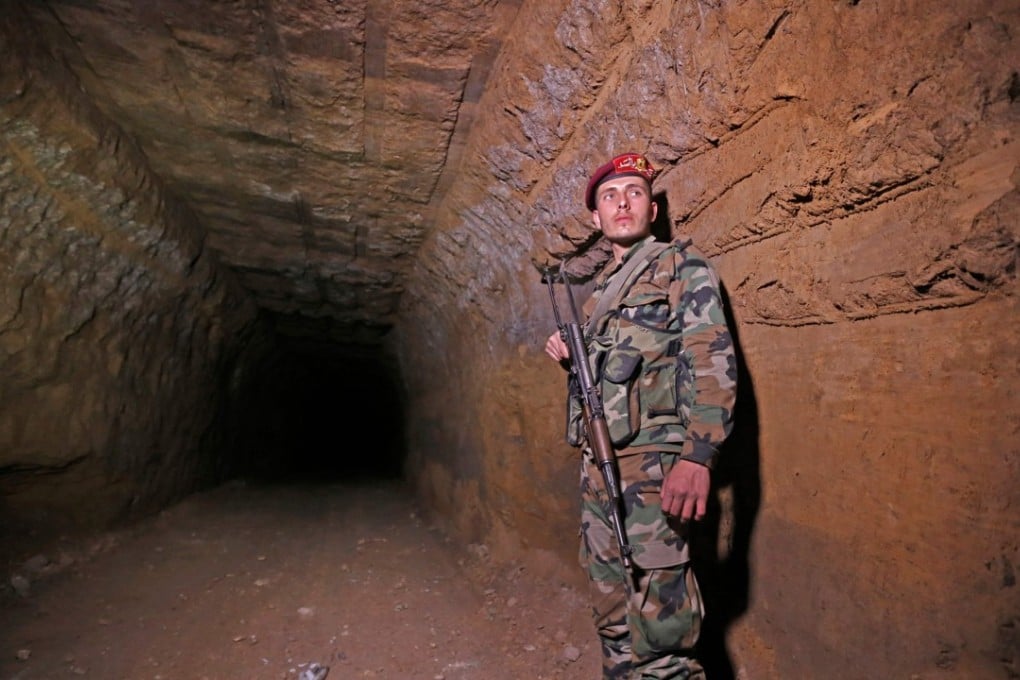Beneath the ruins of Syria’s Ghouta, rebels left behind a labyrinth of tunnels

Tunnels stretch into the darkness, some wide enough to drive a car through. In Eastern Ghouta, Syrian rebels left behind an underground labyrinth, fitted with hospitals and military headquarters.
“This network of tunnels is a real spider’s web,” said a Syrian army official who escorted journalists on a visit Monday to areas of the Damascus suburb recaptured from the rebels.

In the capital’s Jobar district, an entrance to the underground network lies in the basement of a school converted into military headquarters by the Islamist group Faylaq al-Rahman.
The tunnels are dug about 15 metres deep. The walls are reinforced with metal rods and the tunnels are equipped with surveillance cameras and lights.
Some corridors are wide enough to drive a car through, while others can only be accessed on foot.